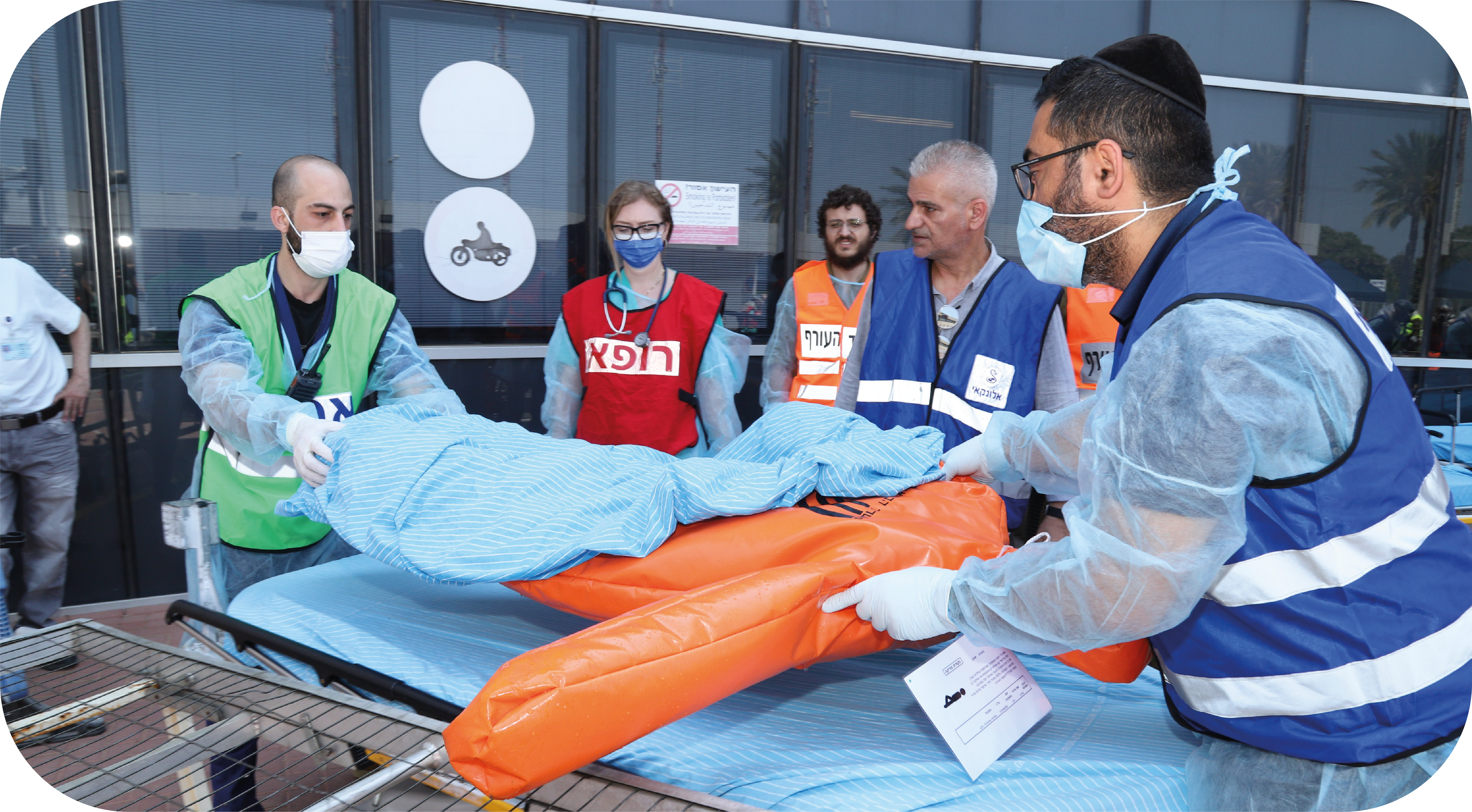Hospital Emergency
Preparedness
Expert Analysis and Guidance

Overview
With geopolitical uncertainty on the rise across the globe, hospitals must be prepared to handle public health emergencies, maintaining functional continuity in ICUs, operating rooms, and emergency rooms despite various external challenges that can include armed conflicts, natural disasters, and pandemics.
At Sheba, we offer hospitals comprehensive emergency preparedness services: beginning with an on-site gap analysis through to the design and implementation of a tailored action plan.
Why Choose Sheba?
One of the top 10 hospitals worldwide according to Newsweek magazine, Sheba is the largest healthcare facility in Israel, spearheading its national medical emergency efforts during natural disasters and wars. Unfortunately, the latter were all too common since both the country and Sheba were established in 1948.
A recognized global leader in care and medical innovation alike with extensive experience responding to and managing public health emergencies, few, if any, healthcare organizations can match Sheba’s capabilities and know-how in this regard.
With more and more hospitals turning to Sheba for guidance, our teams have a proven track record in sharing Sheba’s expertise effectively for the benefit of colleagues worldwide.

Emergency Preparedness Gap Analysis
As part of our emergency preparedness gap analysis service, Sheba specialists are dispatched to provide a comprehensive on-site evaluation covering, among other topics:

Hospitalization infrastructure and medical operation

Cyber security and IT infrastructure resilience
Staff resilience

Emergency standard operating procedures (SOP)

Personnel crisis management training and education

Critical infrastructure resilience (power, water, etc.)

Hospitalization infrastructure and medical operation

Cyber security and IT infrastructure resilience
Staff Resilience

Emergency standard operating procedures (SOP)

Personnel crisis management training and education

Critical infrastructure resilience (power, water, etc.)
Action Plan Preparation & Implementation
Based on the findings of a comprehensive emergency preparedness gap analysis report prepared by Sheba experts, we provide end-to-end guidance and support in formulating an intervention plan that addresses all key concerns. As per client needs, Sheba also offers to manage the intervention plan implementation process from start to finish.
OUR WORK PROCESS
Initial Inquiry
Obtaining Relevant Information and Documentation
Preparation and Scheduling
Sheba Team Arrives On-Site for Gap Analysis
A Detailed Gap Analysis Report is Produced
Preparation of a Gap Analysis Based Action Plan (AP)
AP Implementation: Independently or Under Sheba Guidance\ Management
Hospitalization Infrastructure and Medical Operations
Inspecting emergency command & control infrastructure (including public announcement systems, emergency tactical communication devices, etc.), fire safety measures, and protecting vital hospital facilities (ICUs, operating rooms, emergency medicine departments, ambulance bays, etc.)
Staff Resilience
Verifying that the appropriate steps are taken to ensure staff members can cope with crises, handle personal risks, and maintain a sense of cohesion. Recommended measures include regular training simulations and setting up an emergency support framework for the families of staff members, such as onsite kindergartens and educational resources. Employee counseling services, stress management programs, and mental health support are also important to helping employees manage the emotional and psychological stress of working under constant threat.
Personnel Crisis Management Training and Education
Assessing the training and drills conducted, which are essential to ensuring that staff are prepared for emergencies. These drills help familiarize personnel with the emergency protocols needed to respond effectively in a crisis via simulated scenarios. Drills typically include simulated missile attacks, cyberattacks, as well as other emergency scenarios, and are often performed in collaboration with local emergency responders.
Cyber Security and IT Infrastructure Resilience
Reviewing the number, locations, and physical as well as cyber protection of data centers. This also involves examining data protection protocols, infiltration test methodologies and frequency, as well as the training and organization of relevant manpower.
Emergency Standard Operating Procedures (SOP)
Clearly defined response protocols are critical in emergency situations. Protocols must specify emergency roles and responsibilities, as well as the steps that need to be taken to ensure patient safety and continuity of care. For example, a detailed plan should outline procedures for evacuating patients, activating emergency backup systems, managing an influx of patients during mass casualty incidents, and providing care at alternative sites such as field hospitals.
Critical Infrastructure Resilience (Power, Water, Etc.)
Inspecting electrical, water, food, and medical gas infrastructure protection level and supply in case of emergency.

